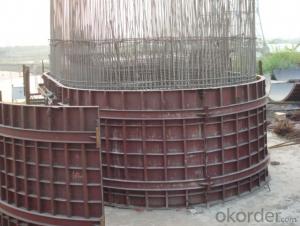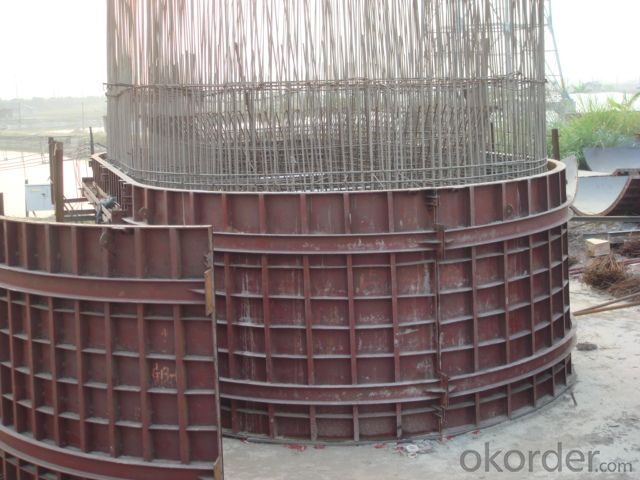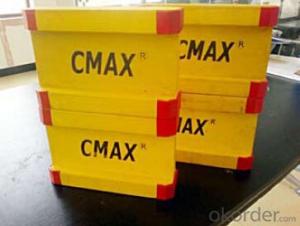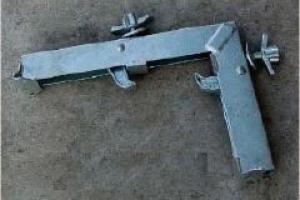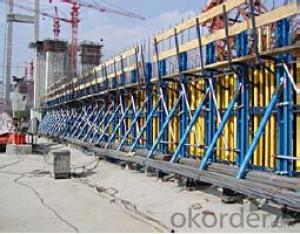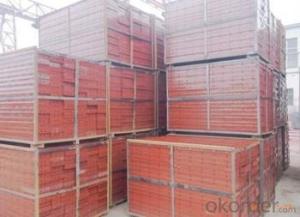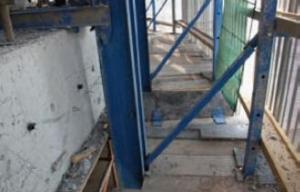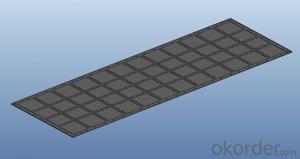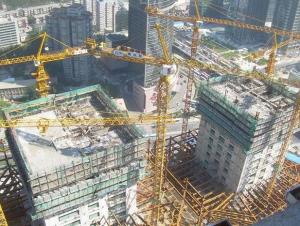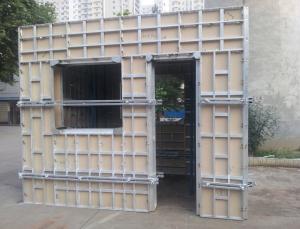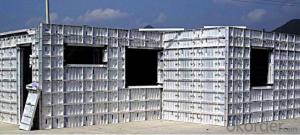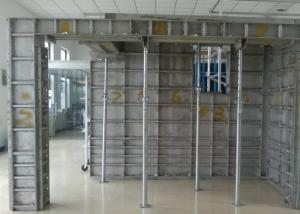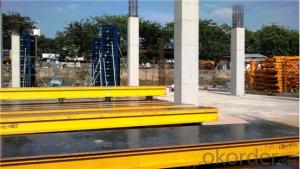Form work
- Loading Port:
- China Main Port
- Payment Terms:
- TT OR LC
- Min Order Qty:
- -
- Supply Capability:
- -
OKorder Service Pledge
OKorder Financial Service
You Might Also Like
Specifications
Steel Formwork, Available in Various Weights, Dimensions and Area, Suitable for DocksSteel formwork
Were engaged in development and manufacturing of the special type steel formwork for highways, railways, bridges, tunnels, walls, docks, reservoirs, large-scale stadiums, exhibition centers, and more
Specifications:
Dimension: 300 x 1,500 x 55, 300 x 1,200 x 55, 300 x 900 x 55, 300 x 600 x 55, 250 x 1,500 x 55, 250 x 1,200 x 55, 250 x 900 x 55, 250 x 600 x 55, 100 x 100 x 1,500, 100 x 100 x 1,200, 100 x 100 x 900, and 100 x 100 x 600mm
Area/pc:0.45, 0.36, 0.27, 0.18, 0.375, 0.30, 0.225, 0.15, 0.30, 0.24, 0.18, and 0.12m2
Weight: 17.99, 14.98, 11.86, 8.68, 15.60, 13.80, 10.46, 7.87, 15.40, 12.86, 10.86, and 7.48kg
Other dimensions and shapes are subject to mutual discussions
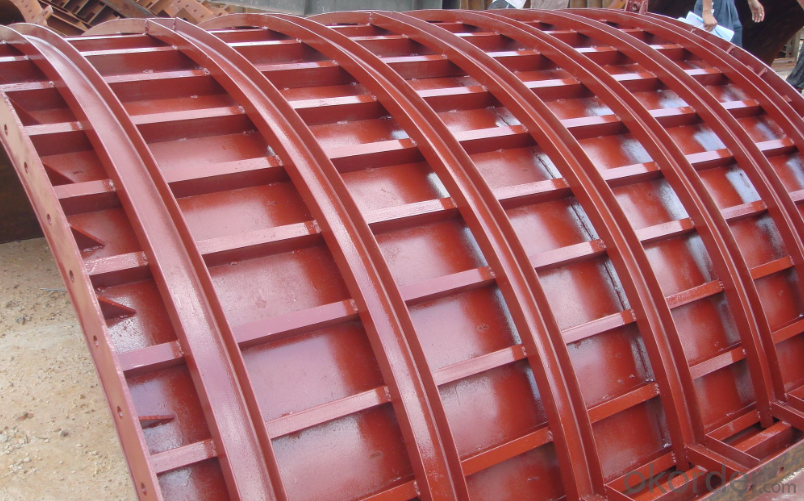
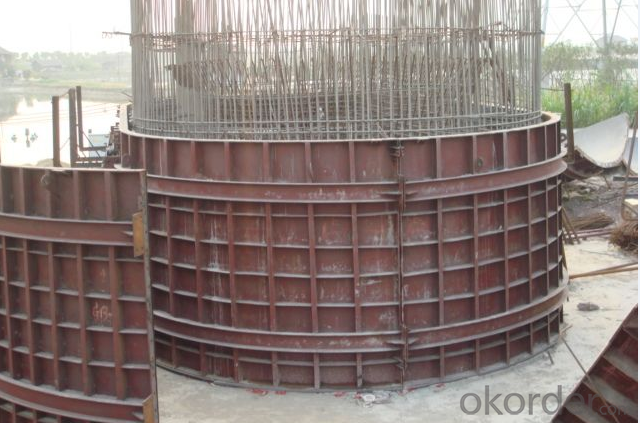
- Q: What are the different safety guidelines for dismantling steel formwork?
- To ensure the protection of workers and prevent accidents, it is important to follow several important safety guidelines when dismantling steel formwork. These guidelines are as follows: 1. Personal Protective Equipment (PPE): Workers involved in the dismantling process must wear appropriate PPE, including safety goggles or glasses, gloves, hard hats, and steel-toed boots. This will safeguard them against potential hazards such as falling debris or sharp edges. 2. Training and Competency: Only individuals who have received proper training and are competent should be assigned to dismantle steel formwork. They should have a thorough understanding of the dismantling process and be aware of the potential risks involved. 3. Safe Work Area: Before commencing the dismantling process, it is necessary to adequately prepare the work area. This involves removing any obstructions or hazards, ensuring a stable and level ground, and demarcating the area to prevent unauthorized access. 4. Tools and Equipment: Workers should utilize appropriate tools and equipment for the dismantling process. This may include wrenches, hammers, cutting tools, and lifting equipment. Tools should be regularly inspected for damage or defects and replaced if necessary. 5. Structural Stability: Prior to dismantling any part of the formwork, workers must ensure that the structure is stable and secure. Temporary supports or bracing may need to be used to prevent any collapse or movement during the dismantling process. 6. Sequential Dismantling: The dismantling of steel formwork should be carried out in a sequential manner, starting from the top and working downwards. This helps maintain the stability of the structure and minimizes the risk of uncontrolled collapses. 7. Controlled Lowering: When dismantling larger steel formwork components, such as panels or beams, they should be lowered in a controlled manner using appropriate lifting equipment. This prevents sudden movements or drops that could cause injuries or damage. 8. Communication and Coordination: Clear communication and coordination between workers involved in the dismantling process are crucial to ensuring everyone's safety. This includes using hand signals, verbal communication, and adhering to a pre-determined plan or procedure. 9. Regular Inspection: Regular inspection of the steel formwork during the dismantling process is important to identify any signs of damage, corrosion, or structural defects. Any issues should be immediately reported and appropriate actions should be taken to address them. 10. Emergency Procedures: Workers should be familiar with emergency procedures in case of accidents or unexpected events. This includes knowing the location of emergency exits, fire extinguishers, and first aid kits, as well as understanding how to respond to incidents such as a collapse or injury. By adhering to these safety guidelines, the risk of accidents and injuries can be significantly reduced during the dismantling of steel formwork. It is crucial to prioritize the safety of workers and ensure that proper precautions are taken at all times.
- Q: How does steel formwork accommodate for different concrete curing durations?
- Steel formwork is a versatile and durable option for concrete construction projects that allows for accommodating different concrete curing durations effectively. One way steel formwork accommodates for different concrete curing durations is by providing a stable and rigid structure that ensures the concrete retains its shape and strength during the curing process. The steel panels and frames used in formwork are designed to withstand the pressure exerted by the fresh concrete, preventing any deformation or collapse. Additionally, steel formwork allows for easy removal and reassembly, providing flexibility in adjusting the formwork setup to match the required curing duration. This is particularly useful in cases where different sections of the concrete structure need varying curing durations due to factors such as structural requirements or environmental conditions. Furthermore, steel formwork can be easily modified or adjusted to accommodate the use of various curing techniques. For instance, if a project requires accelerated curing methods, such as the use of steam or heat, steel formwork can be adapted to incorporate the necessary insulation or heating elements. This promotes faster curing while maintaining the stability and integrity of the formwork. Moreover, steel formwork offers efficient handling and transportation, allowing for the swift repositioning or removal of forms as required. This is especially advantageous when dealing with time-sensitive projects where different sections of the structure may need to be cured at different times. In summary, steel formwork accommodates for different concrete curing durations by providing a strong and stable structure that supports the concrete during the curing process. Its versatility allows for easy adjustment and modification to cater to varying curing techniques, while its ease of handling and transportation facilitates efficient repositioning or removal of formwork.
- Q: How does steel formwork handle concrete shrinkage and expansion?
- Steel formwork handles concrete shrinkage and expansion by providing a rigid framework that supports and contains the concrete during the curing process. The steel formwork is designed to withstand the pressure exerted by the concrete, preventing any deformation or cracking that may occur due to shrinkage or expansion. Its strength and durability ensure that the formwork remains intact and stable, effectively managing the dimensional changes of the concrete.
- Q: Can steel formwork be used for pre-stressed concrete elements?
- Yes, steel formwork can be used for pre-stressed concrete elements. Steel formwork provides high strength and durability, making it suitable for handling the high stresses and pressures involved in the pre-stressing process. Additionally, steel formwork allows for precise shaping and alignment of pre-stressed concrete elements, ensuring accurate results.
- Q: PVC building template introduction
- PVC construction template turnover number can reach more than 30 times, but also recycling. The temperature range is large, the specification is strong, can be seen, drill, easy to use. The smoothness and smoothness of the surface of the template exceed the technical requirements of the existing clear water concrete formwork, and the utility model has the functions of fire resistance, corrosion resistance, water resistance and chemical corrosion resistance. Can meet the demands of building formwork of various cuboids and cubes, L shape, U shape requirements.PVC building template is to insist on processing experience digest and absorb the European advanced equipment manufacturing technology and half on advanced products and technology, composite material formed by extruding the high temperature of 200 DEG C.
- Q: What are the different sizes and dimensions available for steel formwork panels?
- Steel formwork panels are available in various sizes and dimensions to suit different construction needs. The most common sizes for steel formwork panels are 1.2 meters by 2.4 meters and 1.5 meters by 3 meters. These sizes are widely used in the construction industry due to their versatility and efficiency. The thickness of steel formwork panels can vary depending on the required load-bearing capacity and durability. Typically, steel formwork panels range from 12mm to 18mm in thickness. Thicker panels are often preferred for heavy-duty applications, while thinner panels are suitable for lighter loads. In addition to the standard sizes, custom sizes and dimensions can also be manufactured to meet specific project requirements. This flexibility allows contractors to tailor the formwork panels to their unique construction needs, ensuring optimal performance and efficiency on the job site. It is important to note that the sizes and dimensions of steel formwork panels may vary between manufacturers. Therefore, it is essential to consult with the supplier or manufacturer to determine the available sizes and dimensions for a specific product line. This will ensure that the chosen steel formwork panels are suitable for the intended application and meet the necessary structural requirements.
- Q: How does steel formwork handle reinforcement placement?
- Steel formwork is a versatile and popular choice in construction due to its strength, durability, and ability to handle reinforcement placement efficiently. When it comes to handling reinforcement placement, steel formwork offers several advantages. Firstly, steel formwork provides a rigid structure that can withstand the weight and pressure exerted by the reinforcement bars. This ensures that the bars remain in the desired position and do not move or shift during the concrete pouring process. The sturdy nature of steel formwork eliminates the risk of deformation or displacement of the reinforcement, ensuring the structural integrity of the final concrete structure. Additionally, steel formwork comes with pre-determined holes and slots, which allow for precise placement of the reinforcement bars. These pre-designed openings enable quick and accurate installation of the bars, reducing the time and effort required for reinforcement placement. Steel formwork also provides the flexibility to adjust the position of the reinforcement bars if required, ensuring optimal reinforcement placement for the specific project requirements. Moreover, steel formwork offers the advantage of easy access to the reinforcement bars during the pouring of concrete. The formwork can be designed with removable panels or openings, allowing construction workers to monitor and adjust the placement of reinforcement bars as needed. This accessibility ensures that the reinforcement is properly positioned, preventing any potential weak areas or structural deficiencies in the concrete structure. Furthermore, steel formwork allows for efficient and effective integration of various reinforcement elements, such as steel mesh, rebar cages, or post-tensioning systems. The formwork system can be designed to accommodate these different reinforcement methods, ensuring compatibility and ease of installation. This flexibility in reinforcement placement is particularly advantageous for complex or intricate concrete structures that require specific reinforcement configurations. In conclusion, steel formwork is well-equipped to handle reinforcement placement efficiently. Its strength, rigidity, and pre-designed openings allow for accurate and secure positioning of reinforcement bars. The accessibility and adaptability of steel formwork further enhance its capability to handle various reinforcement elements, ensuring the integrity and strength of the final concrete structure.
- Q: Can steel formwork be easily repaired in case of damage?
- Yes, steel formwork can be easily repaired in case of damage. Steel is a highly durable and strong material, and any minor damages such as dents or scratches can be easily repaired through simple techniques like grinding or welding. Additionally, if there are major damages that require replacement of certain parts, steel formwork allows for easy disassembly and reassembly, making it a convenient option for repair work. The versatility of steel formwork ensures that it can be quickly repaired, minimizing downtime and costs associated with any damages.
- Q: Can steel formwork be used in tunnel construction projects?
- Certainly! Tunnel construction projects can indeed utilize steel formwork. When it comes to tunnel construction, steel formwork is widely preferred because of its durability, strength, and ability to be reused. This type of formwork offers a strong and reliable framework for pouring concrete, aiding in achieving precise and accurate dimensions in tunnel construction. Moreover, steel formwork is capable of withstanding the pressures exerted by the surrounding soil and the weight of the concrete, which guarantees the stability and safety of the tunnel structure. In addition to these advantages, steel formwork is resistant to corrosion and boasts a longer lifespan compared to other formwork options, making it an excellent choice for tunnel construction projects that require longevity.
- Q: How does steel formwork affect the overall waterproofing of a building?
- The main purpose of steel formwork is to provide stability and shape to wet concrete during the construction process. It does not directly affect the overall waterproofing of a building. Waterproofing is typically achieved through the use of waterproof membranes, sealants, or coatings applied to the external surfaces of the structure. Proper installation and sealing of the formwork joints are important to prevent water leakage during the concrete pouring process. Any gaps or cracks in the formwork can allow water to seep into the structure, potentially compromising the waterproofing system. Additionally, the choice of formwork material indirectly influences the overall waterproofing of a building. Steel formwork, being durable and robust, can withstand the pressure of wet concrete without deforming or leaking. This ensures that the concrete is shaped and compacted correctly, resulting in a more solid and stable structure. A well-constructed concrete framework indirectly contributes to the building's waterproofing capabilities by enhancing its integrity and longevity. In conclusion, while steel formwork does not directly impact the overall waterproofing of a building, it is crucial for maintaining the structural integrity of the concrete during construction. Proper installation and sealing of formwork joints are necessary to prevent water leakage. Ultimately, the choice and correct application of appropriate waterproofing materials determine the building's overall waterproofing performance.
Send your message to us
Form work
- Loading Port:
- China Main Port
- Payment Terms:
- TT OR LC
- Min Order Qty:
- -
- Supply Capability:
- -
OKorder Service Pledge
OKorder Financial Service
Similar products
Hot products
Hot Searches
Related keywords
